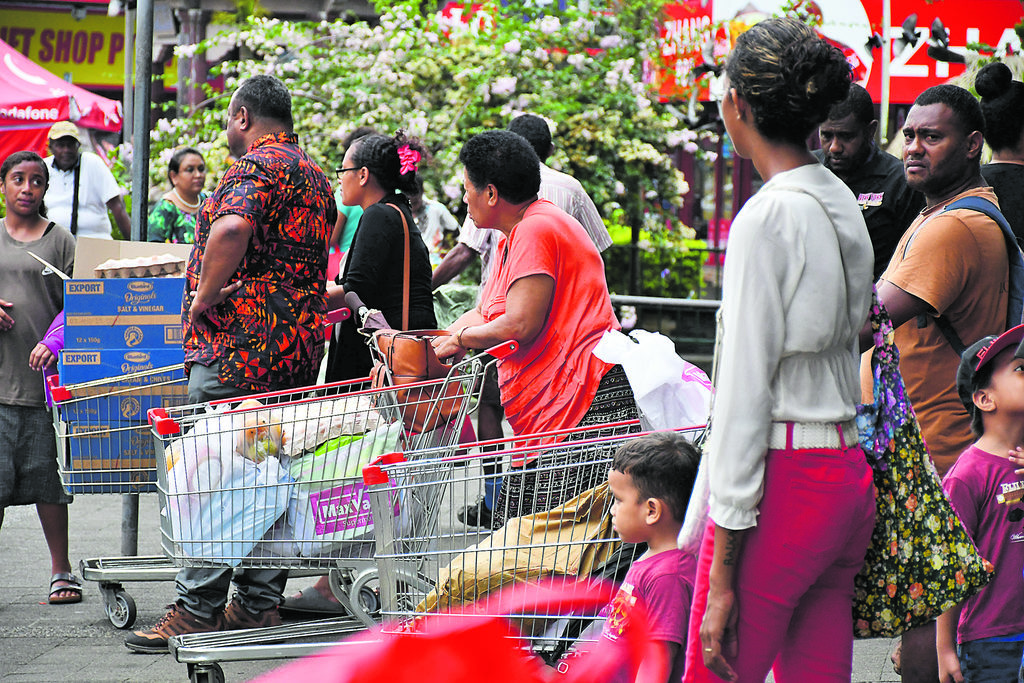Bula Vinaka shoppers — what’s in the budget for you and your family is a hot topic among many today! The 2025–26 National Budget has now been passed in Parliament with strong support, but for many Fijian families, the key question remains: What does this really mean for us at the market stalls, supermarkets, and shop counters?
While the budget outlines bold promises — from tax cuts and subsidies to wage increases and development funding — what matters most is delivery.
As shoppers, we want to know whether these policies will translate into lower prices on food, more savings on disposable income, better access to services, and tangible improvements in our day to daylives.
In short, what’s in it for me and my family is the question many are pondering on or should be! One of the headline announcements is the 2.5 per cent reduction in VAT, which will drop from 15 to 12.5 per cent starting August 1. Nadi Chamber of Commerce and Industry (NCCI) president Lawrence Kumar says this will help both businesses and the public, giving average consumers greater purchasing power and small but meaningful savings. “For the average person, it gives them a bit of bargain power.
There would be a bit of savings in their wallets, and they would be able to buy a bit more,” Kumar said.
But he also highlighted that this is a deficit budget, meaning government spending exceeds its revenue. The shortfall will be financed by borrowing — a move designed to stimulate the economy and support households, but one that also increases public debt for the Government which taxpayers will pay.
Kumar urged for innovative strategies to manage the deficit and for robust monitoring to ensure that VAT reductions lead to actual price relief for shoppers. The Fijian Competition and Consumer Commission (FCCC), must oversee this.
The budget has also received strong support from civil society organisations with the zero VAT on 22 essential items and 10 per cent bus fare subsidy.
Fiji Council of Social Services (FCOSS) executive director Vani Catanasiga described it as “pragmatic” and praised its alignment with public concerns. She welcomed the 3 per cent pay increase for civil servants, effective August 1, which comes on top of previous increases of 7–20 per cent.
Civil servants will see total pay rises of 10–23 per cent within a year, injecting approximately $115 million into household incomes. Catanasiga said initiatives like the 10 per cent bus fare subsidy and zero-VAT on selected items, were “meaningful relief” for ordinary Fijians. However, she cautioned that the real impact of these measures depends on how effectively they are implemented.
Monitoring, transparency, and follow-through will be crucial. From an academic perspective, USP economists Dr Baljeet Singh and Associate Professor Dr Sunil Kumar noted that the budget aims to provide relief to struggling households through broad-based support — tax cuts, subsidies, and social spending.
With a total allocation of $4.8 billion, it includes increased funding across key sectors such as education, agriculture, infrastructure, and social protection.
These economists acknowledged that the budget could help stimulate growth amid global uncertainties. But critics, including the Opposition and several economists, have expressed deep concerns. Opposition MP Virendra Lal slammed the 2.5 per cent VAT reduction as “an insult” to low-income families.
“Because for a basket of goods costing $100, it’s giving them relief of only $2.50,” Lal said in Parliament.
“What good will $2.50 do?” Lal argued that under the 9 per cent VAT rate in 2022, that same basket of goods would have cost at least $6 less — enough to cover a taxi fare home from the supermarket. He blamed the government’s earlier move to raise VAT to 15 per cent for worsening the cost-of-living crisis for shoppers, saying it taxed the very consumption needed to sustain economic recovery.
The budget deficit stands at $886 million, equivalent to 6 per cent of GDP, while the borrowing requirement is $1.49 billion — nearly 10 per cent of GDP. Critics argue that this scale of borrowing reverses earlier fiscal consolidation efforts and could push national debt back toward 80 per cent of GDP by 2026. That’s just shy of the post-COVID peak of 90.7 per cent, a level that raised major alarm bells at the time. Another point of concern is the lack of structural reform.
There are no significant new revenue-raising measures to compensate for lower VAT, and some spending oversight mechanisms — such as ministry-level expenditure approvals — have been removed.
Critics say this opens the door to unchecked spending, political interference, and inefficient program delivery, particularly with national elections due in 2026.
There’s also little focus on long-term resilience — no major new policies for diversifying the economy, improving public sector productivity, or preparing for climate impacts.
While the civil service reform and spending efficiency were mentioned, no clear mechanisms were outlined. So where does that leave the ordinary Fijian shopper? In the short term, many will welcome the wage increases, subsidies, and tax relief.
These are real wins for households struggling to stretch the value of their dollars. But there’s also reason to watch cautiously. Without careful implementation and future reform, we could be heading for another round of debt-driven austerity in years to come.
In the end, shoppers will judge this budget not by its promises, but by the prices at the checkout, the state of our roads and hospitals, the value of their pay and whether their families are truly better off. Because let’s be honest — talk is cheap. But groceries? Not so much for a while now!






